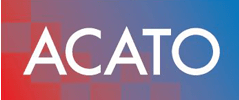
How to Conduct a Gap Analysis for ISO 27001 Certification
Achieving ISO 27001 certification can be a complex process, especially when organizations face gaps in their information security management systems. Conducting a gap analysis is a critical step in identifying these gaps and developing a plan for compliance. This blog will provide a clear guide on how to perform a gap analysis for ISO 27001 certification, including an effective checklist and steps for analyzing and reporting findings. By following this approach, readers can pinpoint weaknesses in their systems and take action to protect their data, ultimately enhancing their security posture and satisfying key clients.
Essential Key Takeaways for Conducting an ISO 27001 Gap Analysis
- Gap analysis is essential for identifying discrepancies in information security practices for ISO 27001 certification
- Regular internal audits help maintain compliance and improve overall security posture
- Effective communication is key to facilitating a smoother gap analysis process
- Tailored gap analysis checklists enhance the effectiveness of compliance efforts and address unique vulnerabilities
- Monitoring changes post-analysis ensures continuous improvement of the information security managementsystem
Understanding Gap Analysis in ISO 27001 Certification

Gap analysis is essential for achieving ISO 27001 certification, focusing on identifying discrepancies between current information security practices and the required standards. Key components include understanding the framework, addressing mitigation strategies for vulnerabilities, and leveraging a comprehensive checklist for efficiency. Recognizing common challenges, such as those found in IATF 16949 and ISO 50001 contexts, provides insights into successful certification efforts.
Defining the Key Components of ISO 27001
The key components of ISO 27001 focus on establishing an effective information security management system that aligns with leadership directives and applicable laws. A strong emphasis on quality management systems ensures that organizations can assess and enhance the usability of their security protocols. Additionally, conducting regular internal audits is critical for identifying gaps and maintaining compliance, enabling an organization to proactively address vulnerabilities and improve overall security posture.
Recognizing Common Challenges in Certification
Recognizing common challenges in ISO 27001 certification is crucial for a successful gap analysis. Organizations may encounter obstacles such as insufficient policy alignment across the supply chain, which can hinder effective information security management. Moreover, a lack of understanding regarding the integration of energy management protocols can complicate compliance efforts by masking potential vulnerabilities.
- Challenges in policy alignment across the supply chain.
- Understanding the integration of energy management protocols.
- Identifying vulnerabilities during the certification process.
Knowing how to perform a gap analysis is only the start. Understanding when to conduct one can be the key to ensuring your ISO 27001 journey is successful.
Identifying When to Conduct a Gap Analysis for ISO 27001

Timing a gap analysis for ISO 27001 certification is vital for achieving regulatory compliance and effective information security management. Triggers for conducting a gap analysis include changes in regulations, stakeholder feedback, and the need for evaluation against updated standards. Focus on communication throughout the process ensures clarity and accountability, facilitating a smoother transition to enhanced security measures.
Timing Your Analysis for Maximum Impact
Timing a gap analysis for ISO 27001 certification significantly influences an organization’s ability to enhance customer satisfaction and meet industry standards effectively. Key moments for conducting this analysis include after internal audits or when implementing lean manufacturing principles, as these processes often reveal resource inefficiencies or compliance gaps. By aligning the analysis schedule with organizational changes or updated regulations, the organization can proactively address vulnerabilities and reinforce its commitment to information security standards like AS9100, ultimately leading to improved operational resilience.
Triggers for Gap Analysis in Information Security Management
Triggers for conducting a gap analysis in information security management often arise from various events that impact regulatory compliance and operational effectiveness. For instance, an organization may necessitate a review following internal audits that reveal inconsistencies in current practices compared to established standards. Changes in contracts, particularly those tied to security requirements, can also prompt a gap analysis to ensure adherence to quality management systems and industry benchmarks related to food safety and quality assurance.
A gap analysis reveals where improvements lie for ISO 27001. Next, an effective checklist will guide you through the process, making the path clearer and more attainable.
Developing an Effective Gap Analysis Checklist

Key areas to include in a gap analysischecklist for ISO 27001 certification encompass risk assessment, energy management practices, and supply chain management considerations. Tailoring the checklist to fit an organization‘s specific context enhances its effectiveness, ensuring that it addresses unique vulnerabilities and knowledge gaps. These components will facilitate a more focused approach to compliance and security enhancement.
Key Areas to Include in Your Checklist
When developing a gap analysischecklist for ISO 27001 certification, it is vital to focus on key areas that directly impact information security management and risk management strategies. These include identifying critical assets, evaluating current security protocols, and ensuring that there is alignment between security practices and the expectations of the board of directors. Incorporating these elements allows organizations to address vulnerabilities comprehensively and reinforces their commitment to robust information security practices:
- Identification of critical assets.
- Assessment of current security protocols.
- Alignment with board of directors‘ expectations.
Tailoring the Checklist to Your Organization’s Context
To effectively tailor a gap analysischecklist for ISO 27001 certification, organizations must consider their specific environments, particularly in sectors like medical devices where compliance with ISO 13485 is essential. Incorporating a quality management strategy is vital, as it allows teams to align their security practices with regulatory standards while ensuring that their security measures adequately address unique risks. Furthermore, including practices such as root cause analysis can help organizations identify underlying issues and enhance overall security posture, leading to more effective management of information security risks.
With a solid checklist in hand, the path to readiness becomes clearer. Next, the steps for conducting a gap analysis will illuminate the journey towards achieving ISO 27001 certification.
Steps for Conducting a Gap Analysis for ISO 27001 Certification

Preparing the team for an iso 27001 gap analysis is crucial for success. Effective data collection techniques will ensure accurate assessments, while a well-executed analysis procedure will drive organizational compliance and security. Each of these steps provides vital insights into quality management systems, aligning with standards like ISO 45001 and supporting the path to accreditation.
Preparing Your Team for the Analysis
Preparing the team for an ISO 27001 gap analysis requires a strategic approach to ensure that everyone understands their roles in the process. Conducting a thorough risk assessment can help identify vulnerabilities specific to the organization, enabling team members to align their efforts with established security protocols. Utilizing tools such as SWOT analysis will provide insights into strengths and weaknesses, fostering a culture of sustainability and continuous improvement, which is vital in meeting customer expectations and adhering to regulatory requirements.
Data Collection Techniques for Accurate Assessment
To ensure accurate assessment during a gap analysis for ISO 27001 certification, organizations can utilize various data collection techniques that focus on document reviews and stakeholder input. Emphasizing safety, teams should gather pertinent documents that outline existing policies and procedures, helping to identify any discrepancies in resource management or project management practices. Moreover, involving personnel from different departments, especially those involved in outsourcing and operational management, can provide a comprehensive view of current security measures and highlight gaps that need to be addressed.
Executing the Gap Analysis Procedure
Executing the gap analysis procedure for ISO 27001 certification requires a systematic approach to ensure all critical aspects of information security are evaluated effectively. Organizations should start by mapping current systems and practices against the ISO 27001 framework, identifying any discrepancies that may exist within their manufacturing processes. This step involves a thorough review of existing documentation and the engagement of key personnel to provide insights into operational practices, ultimately leading to a clearer understanding of how to address identified gaps efficiently.
The gap analysis lays bare the strengths and weaknesses of your current system. Now, it is time to analyze the findings and report on what they mean for your path to ISO 27001 certification.
Analyzing and Reporting Findings

Structuring a gap analysis report is essential for effectively communicating findings related to ISO 27001 certification. This process involves highlighting compliance gaps and identifying areas for improvement that can enhance information security management. Clear documentation and actionable insights will provide organizations with a roadmap for addressing deficiencies and achieving alignment with established standards.
Structuring Your Gap Analysis Report
Structuring a gap analysis report for ISO 27001 certification requires clarity and organization to effectively communicate findings. The report should begin with an executive summary highlighting key gaps identified during the analysis, followed by detailed sections that outline specific vulnerabilities and recommended actions. Each section must be clear, concise, and include charts or graphs to visualize compliance status, fostering a better understanding for stakeholders looking to improve their information security managementsystem.
Highlighting Compliance Gaps and Areas for Improvement
Highlighting compliance gaps and areas for improvement is a critical step in the gap analysis process for ISO 27001 certification. Organizations should clearly identify discrepancies between existing practices and the ISO 27001 standards, focusing on specific areas such as risk assessment methods and security control implementation. By documenting these gaps and providing actionable recommendations, organizations can effectively prioritize improvements and align their information security managementsystem with regulatory requirements and industry best practices.
| Compliance Gap | Area for Improvement |
|---|---|
| Inadequate Risk Assessment | Implement comprehensive risk evaluation processes. |
| Weak Security Controls | Enhance technical and administrative controls. |
| Poor Policy Documentation | Develop clear and accessible security policies. |
The analysis painted a clear picture, revealing strengths and weaknesses alike. Now, it is time to act, turning insights into actions for achieving ISO 27001 compliance.
Implementing Findings and Actions for ISO 27001 Compliance

Creating an action plan based on gap analysis results is essential for achieving ISO 27001 compliance. This involves identifying key improvements and establishing a timeline for implementation. Monitoring changes and measuring effectiveness will ensure that security measures evolve with organizational requirements and maintain alignment with industry standards. These steps are critical for reinforcing a robust information security managementsystem.
Creating an Action Plan Based on Gap Analysis Results
Creating an action plan based on gap analysis results is crucial for achieving ISO 27001 compliance. This process involves outlining specific steps to address identified vulnerabilities, prioritizing actions based on risk impact, and establishing a timeline for implementation. By setting measurable objectives and assigning responsibilities, organizations can ensure that necessary improvements to their information security management systems are effective and sustainable.
Monitoring Changes and Measuring Effectiveness
Monitoring changes and measuring effectiveness are critical steps in the ISO 27001 compliance journey following a gap analysis. Organizations should establish key performance indicators (KPIs) to track the success of implemented security measures, ensuring they align with information security objectives. Regular reviews and audits can provide insights into the ongoing effectiveness of these actions, allowing organizations to make data-driven adjustments that enhance their information security management systems and address emerging vulnerabilities.
Conclusion
Conducting a gap analysis for ISO 27001 certification is critical for organizations striving to enhance their information security management systems. This systematic approach identifies discrepancies between current practices and established standards, guiding organizations in prioritizing necessary improvements. By developing a tailored checklist and implementing an action plan, businesses can effectively address vulnerabilities and ensure compliance with regulations. Ultimately, these efforts reinforce organizational resilience and build trust with stakeholders, making the process invaluable for long-term success in information security.
